a journey I have been dreaming about for a long time. My aim is not only to capture the natural beauty of Pakistan, but also to highlight its historical treasures – the forgotten forts, ancient tombs, Mughal monuments, and timeless cities that shaped our history.
My motorcycle is ready, bags strapped tightly, and my heart is filled with excitement and a little anxiety – the same feeling I had when I first left Germany for a long trip. It’s 7:30 am, a bit later than I wanted, but it’s time to hit the road.
Leaving Nankana Sahib
Nankana Sahib is not just any city – it’s a place of deep historical and spiritual significance, especially for the Sikh community as the birthplace of Guru Nanak. However, I won’t be sharing much about it today because I’ve already made a detailed vlog dedicated entirely to my hometown. Whoever is interested can watch that vlog, where I’ve shared everything I know and have learned about this place.
This morning, the streets of Nankana are quiet. It doesn’t take long to leave the city as it’s relatively small. The air feels fresh, the sun is still soft, and the roads look surprisingly good – much better than the last time I rode here. Development has taken place, and I can clearly see the changes.
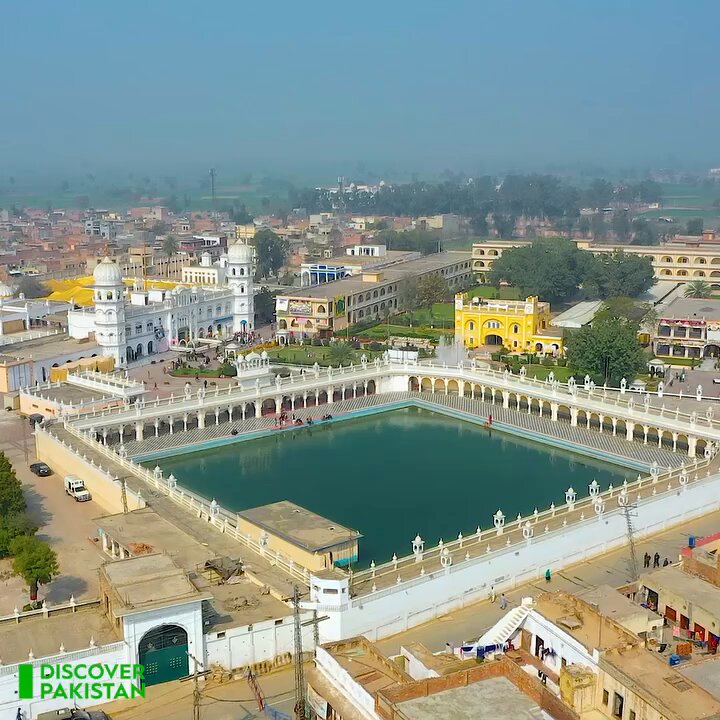
The Road to Sheikhupura
The best way to Islamabad from here is through the Motorway. But, like all motorcyclists in Pakistan know, motorcycles are not allowed on the motorway. That means my route is the GT Road – long, crowded, and full of surprises.
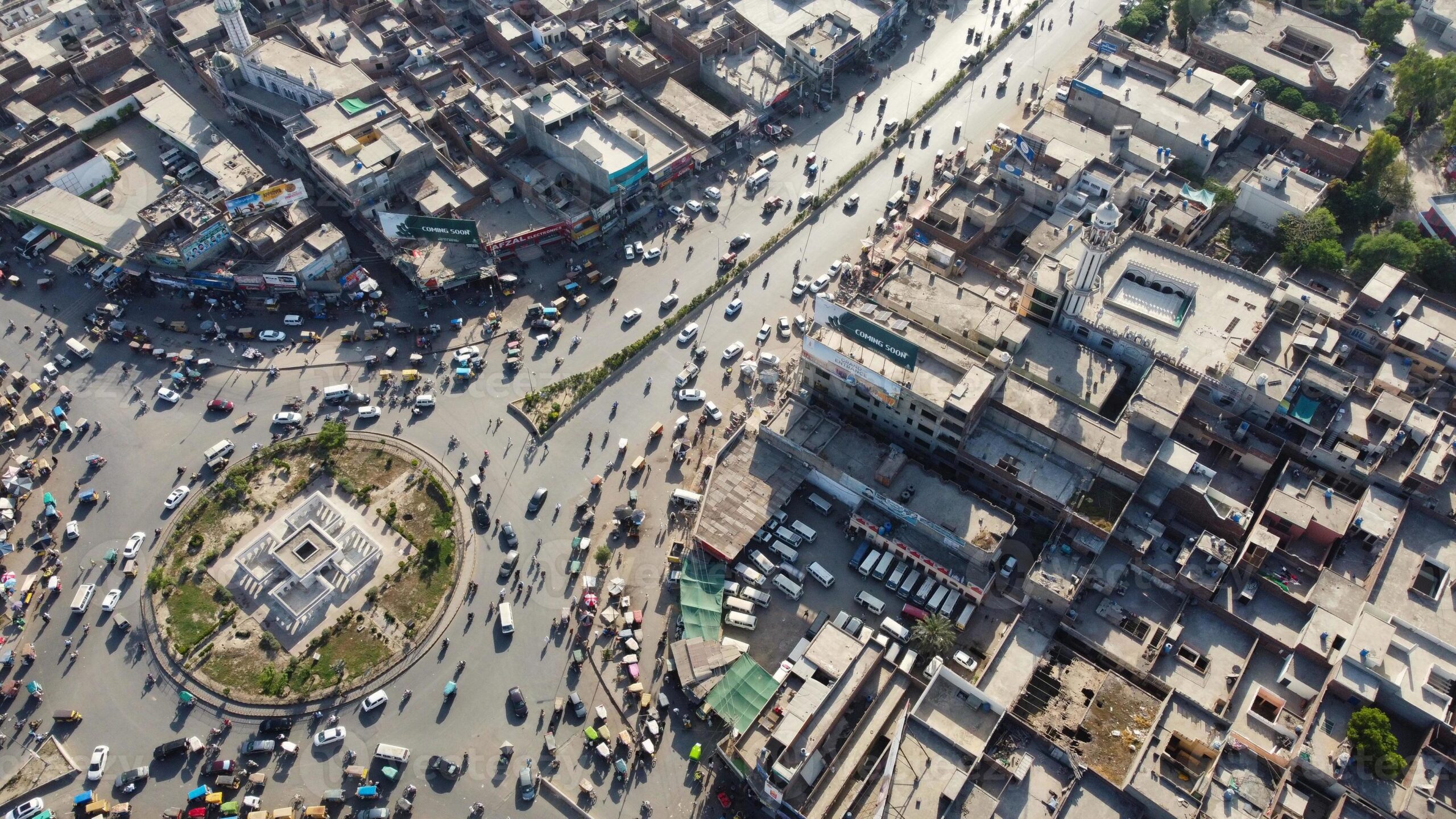
The GT Road is an ancient artery of the subcontinent, connecting cities for centuries. Today, it remains busy and noisy. Cars, trucks, buses, donkey carts, rickshaws, and countless motorcycles flood the lanes. Riding here means keeping your eyes open at all times – brakes are used constantly, speed is always under control, and patience is your best friend.
A short while later, I cross into Sheikhupura, home to one of the most interesting Mughal-era monuments – the Hiran Minar.
Hiran Minar – A Monument of Love
Although I don’t stop here today because of time, I had already recorded footage of Hiran Minar yesterday. It’s a place I really want people to see. The distance from Nankana Sahib to Sheikhupura is about 35–40 km (22–25 miles) by road, depending on the exact route you take.
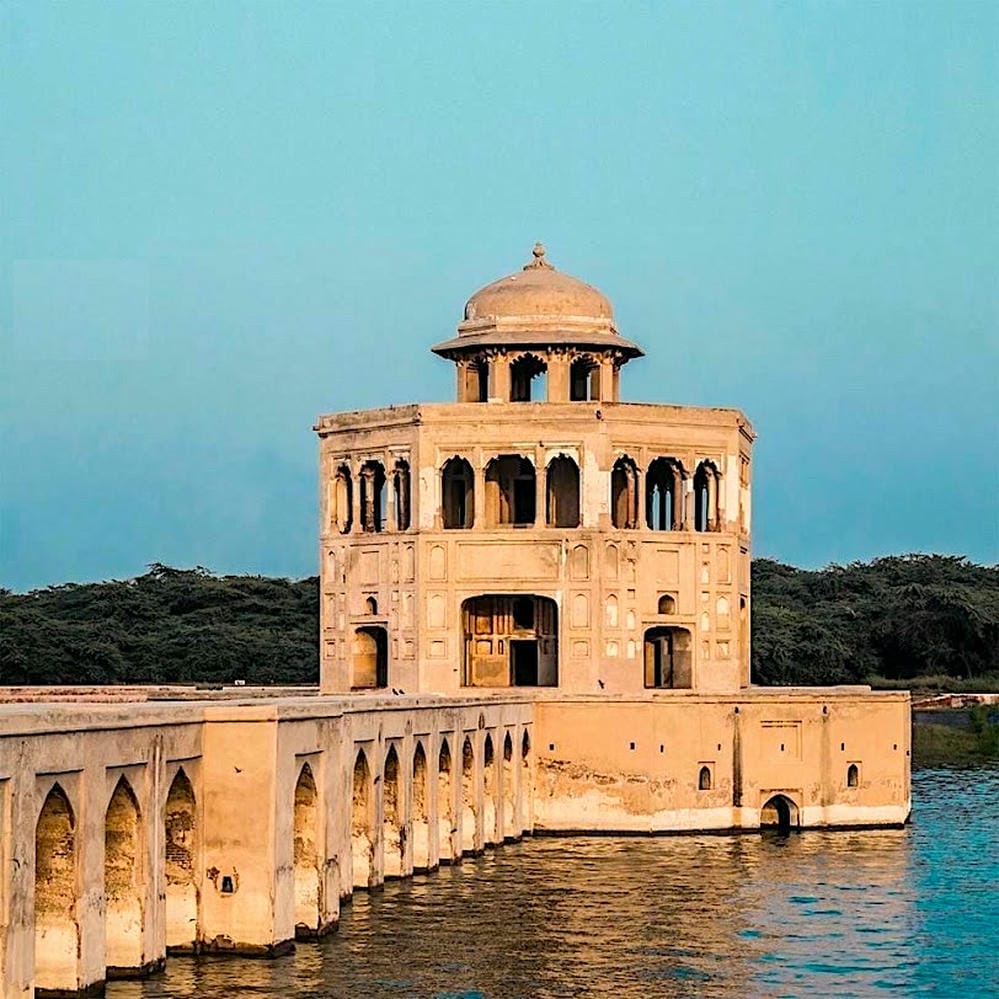
Built in 1606 by the Mughal Emperor Jahangir, the Hiran Minar – literally “The Buck Tower” – is not just a monument but also a symbol of the emperor’s affection for his beloved pet antelope, Mansraj. According to history, Mansraj was trained to bring other animals to the pond so hunters could catch them. When it died, Jahangir had a tomb and a minaret built in its memory.
The site has three major parts: the Bara Dari, a beautiful twelve-doored pavilion built by Shah Jahan; the large water tank in the middle; and the tall tower by Mansraj’s tomb.
The Bara Dari is my favorite part. Its architecture is airy, symmetrical, and pleasant – very similar to the one found near Jahangir’s own tomb in Lahore. For anyone visiting Sheikhupura, I would highly recommend Hiran Minar as a must-see stop.
Towards Gujranwala – The City of Wrestlers
The road distance from Nankana Sahib to Gujranwala is about 100–110 km (depending on the exact route you take). From Sheikhupura, my road takes me towards Gujranwala, about 40–45 km away from Lahore. This city has always been famous as the “City of Wrestlers” because of its strong wrestling culture and history of champions.
Here, I had arranged a small meet-up with my followers. Many friends had been requesting it, and I thought it would be a nice way to connect with people along the journey. Luckily, the meet-up spot was on the GT Road, away from the congested city center.
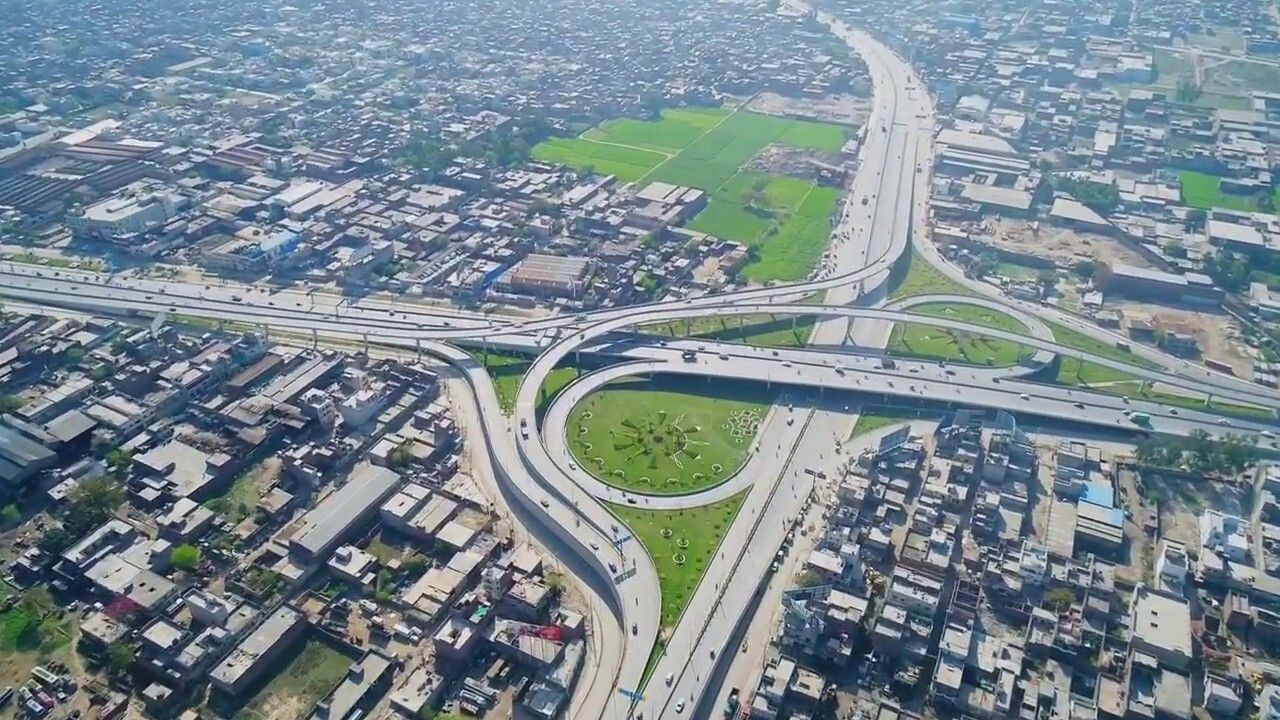
It was a heartwarming experience – people had come from near and far. One brother even rom Gujrat just to meet me. I couldn’t manage a stop in Gujrat itself today, but I was deeply touched by his effort. To all those who came – I am truly grateful.
After the meet-up, we shared goodbyes with smiles, handshakes, and prayers. And once again, I hit the road with a renewed spirit.
The Long Ride Towards Rohtas
From Gujranwala, the road stretched on. The weather turned cloudy, making the ride a lot more pleasant. However, I had not prepared my luggage for rain. So, while I hoped it wouldn’t pour, I kept my rain cover handy – just in case.
The GT Road traffic is relentless. Cars switch lanes without signals, motorcycles dart across without mirrors, and sometimes you see an entire family balancing on one small motorbike – a man driving, a child sitting in front, and two women at the back. It’s risky, it’s chaotic, and it keeps your nerves sharp.
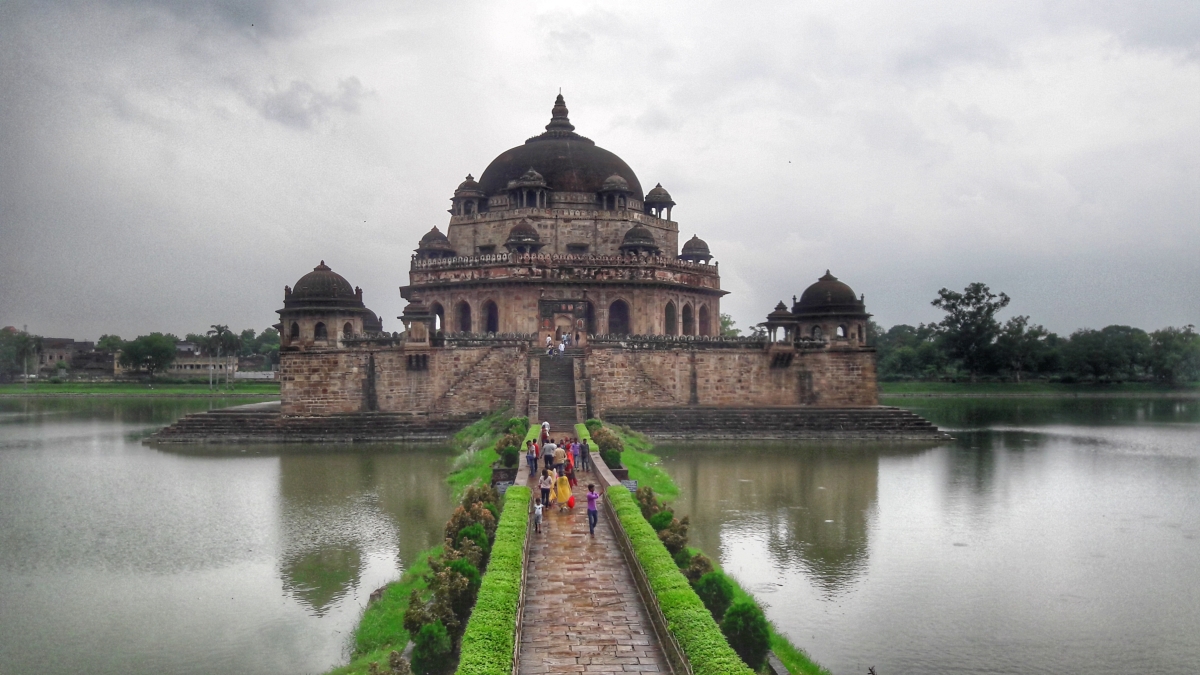
But then, slowly, the flat plains began to give way to low mountains. I knew I was entering the Potohar Plateau, a region famous for its rugged beauty, rolling hills, and historical significance. For me, the sight of mountains is always special – they bring an instant smile to my face.
Rohtas Fort – The Unconquered Fortress
After hours of riding, I finally reached the mighty Rohtas Fort. The road led me directly to one of its gates – the Khwas Khani Gate.
First Impressions: Entering the Fort
Parking our motorcycles outside, we took a moment to admire the fort from the outer perimeter. The entrance, known as the Shah Chandwali Gate, greeted us with intricate carvings and imposing bastions. Passing through the main gate, one could feel the weight of history surrounding every stone.
Walking along the broad pathways, we were struck by the fort’s immense size. Stretching over 70 acres, Rohtas Fort contains 14 gates, watchtowers, and sprawling defensive walls. Each section tells a story—of battles fought, rulers who walked here, and the military foresight that shaped its construction.
Exploring the Gates and Bastions
One of the most striking features is the Patiyala Gate, adorned with ornate floral patterns and geometric designs. We paused here to capture photographs and drone shots, trying to convey the grandeur of the fort in a single frame. The walls, built from solid stone and bricks, have withstood centuries of natural wear, testifying to Sher Shah Suri’s architectural brilliance.
Walking further, we reached Karnal Gate, one of the smaller entrances, which was historically used for soldiers’ movement and logistics. Ali, always keen on history, explained the strategic significance of each gate—how they were designed to confuse and slow invading forces, providing an advantage to defenders.
The Fortress Interior: Courtyards and Ruins
Inside the fort, the courtyards offered a glimpse of life centuries ago. Massive open spaces once used for military drills and gatherings now host tourists and locals exploring history. The remains of old mosques, barracks, and granaries can still be seen, revealing how self-sufficient this fortress was during its prime.
We wandered along the walls of the fort, stopping frequently to admire views of the surrounding landscape. The fort overlooks the Kahan River, and from this vantage point, one can see how the location provided both defensive advantage and natural beauty.
Architectural Marvels: Walls, Gates, and Watchtowers
The fort’s walls are a mix of Afghan and Mughal architectural styles, with massive cylindrical bastions providing unparalleled defense. Some of these towers rise up to 30 feet, allowing archers and soldiers to monitor vast stretches of land. Every corner has a story etched in stone, from carved inscriptions to hidden niches once used for storage or weaponry.
While exploring, we found remnants of ancient water channels and small wells that once provided the fort with water—a necessity for sustaining its inhabitants during prolonged sieges. Every detail reflects careful planning and foresight, making Rohtas not just a fort, but a marvel of medieval engineering.
Cultural Significance and Legends
Rohtas Fort is more than just walls and gates; it carries tales of conquest, loyalty, and legacy. It is said that Sher Shah Suri built it to suppress the local Gakhar tribes, ensuring control over the region. Local legends speak of hidden tunnels and secret passages, though many remain shrouded in mystery.
Walking through the fort, we felt connected to these stories. It was easy to imagine the clanging of swords, the marching of soldiers, and the bustling life within these walls hundreds of years ago. This connection between past and present makes visiting Rohtas Fort a truly immersive experience.
Capturing Memories: Photography and Drone Shots
Of course, no visit is complete without capturing memories. We took extensive photos and drone footage to showcase the fort’s scale and architecture. From aerial shots, one could see the fort’s sprawling layout and how it seamlessly blends into the surrounding terrain. The contrast of ancient stone against the lush greenery of Punjab created stunning visuals.
We also engaged with a few local guides, who shared stories not commonly found in books. Their knowledge added depth to our understanding and helped us appreciate the fort beyond its walls.
Rohtas Fort is not just another fort; it’s one of the largest and most historically important forts in the Indian Subcontinent. Built in 1541 by Sher Shah Suri, its purpose was clear – to control the local tribes (the Gakkhars) who were loyal to the Mughals, and to prevent Humayun, the Mughal emperor exiled in Persia, from returning to power.
The fort was massive, strategically placed, and considered unconquerable. Yet, ironically, when the Mughal army returned in 1555, the vizier in charge handed it over without a fight.
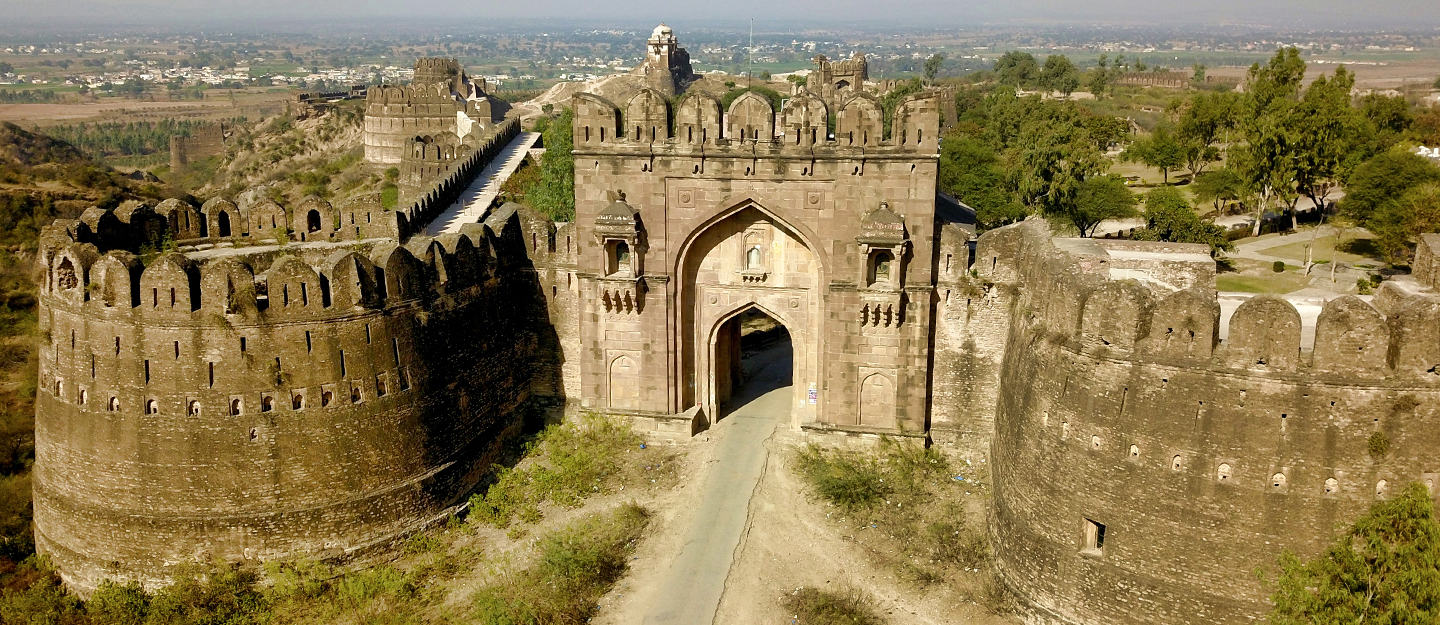
Over the centuries, Rohtas saw many rulers – from Sher Shah Suri to the Mughals, from Nadir Shah and Ahmad Shah Abdali to the Sikhs and later the British. Its long and varied history made it a crucial stronghold in the region.
The fort has 12 gates, each massive and beautifully constructed. The Sohail Gate is the most famous one and often the face of Rohtas in photographs. I walked around, exploring not just the gates but also the Haveli of Raja Man Singh, a nobleman related to Jodha Bai, wife of Akbar.
One striking detail about the fort walls is the presence of small holes. In medieval warfare, defenders used these to pour boiling oil or water on attackers trying to climb the walls. Standing there, I could almost imagine those tense moments of battle centuries ago.
Rohtas is also one of the few places in Pakistan recognized as a UNESCO World Heritage Site, a title that acknowledges its outstanding universal value.
From Rohtas to Rawat – Racing Against the Sun
After leaving Rohtas, my next target was the Rawat Fort, and I wanted to reach it before sunset. The road between the two places winds through small hills and plains, and I noticed fascinating rock formations along the way. Tempting as it was to stop and fly my drone, I kept going – time was short, and safety came first.
As the sun dipped lower, I finally arrived at Rawat. Unlike Rohtas, Rawat is a smaller, more compact fort. Its history, however, is just as dramatic.
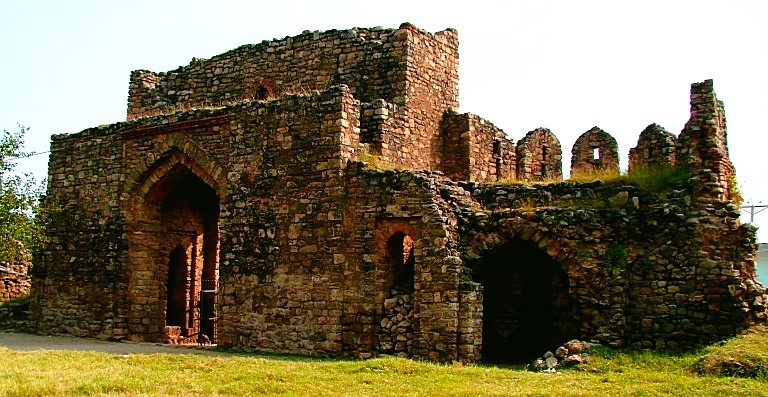
Rawat Fort – The Legacy of the Gakhars
Rawat Fort belonged to the Gakhar tribe, staunch allies of the Mughals. When Sher Shah Suri attacked, the Gakhar chief, Sultan Sarang, resisted fiercely. He was eventually killed, and his grave lies within the fort itself.
The fort is square-shaped, with a mosque inside. It also holds something remarkable – a Buddhist stupa from the 2nd century AD, hidden beneath layers of history. Unfortunately, it’s only visible from the air or from the mosque’s rooftop, which was not accessible at the time.
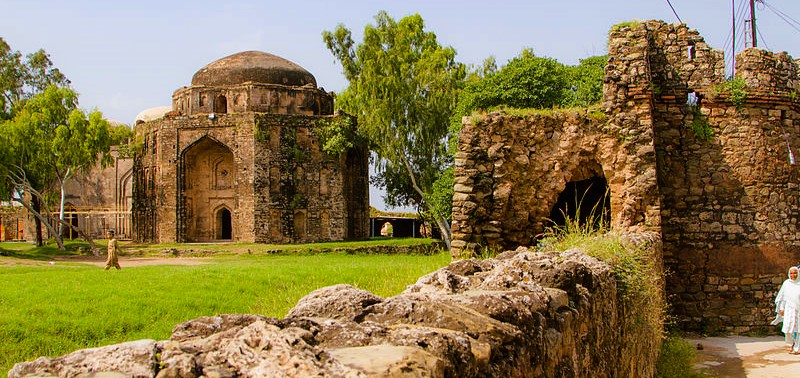
Standing there, I could feel the layers of history: Buddhist monks, medieval Muslim warriors, Mughal allies, Afghan invaders, and colonial administrators – all leaving their mark on this small yet significant site.
Day End
By the time I left Rawat, the sky had turned orange. My first day of the tour had been long, tiring, and eventful – but also deeply rewarding. From the Mughal love story of Hiran Minar to the military might of Rohtas, from the tribal bravery of Rawat to the lively meet-up in Gujranwala, every stop had added something unique to my journey.
Tomorrow, I leave from here and head further north. The next part of my tour is the one I am most excited about – a two-month adventure through the northern areas of Pakistan, where mountains, valleys, rivers, and glaciers await.
For now, I rest with gratitude – to Allah for keeping me safe, to the people I met for their kindness, and to history itself for whispering its stories through forts, gates, and ruins.
The journey has just begun.








